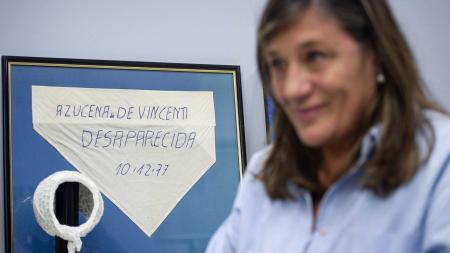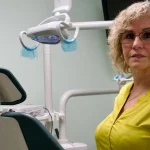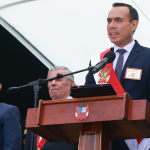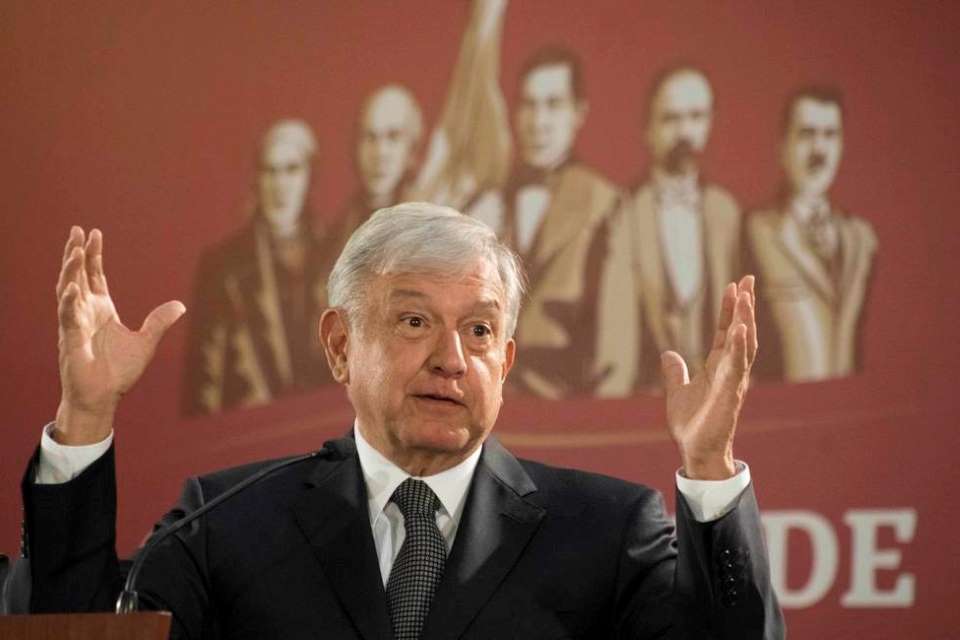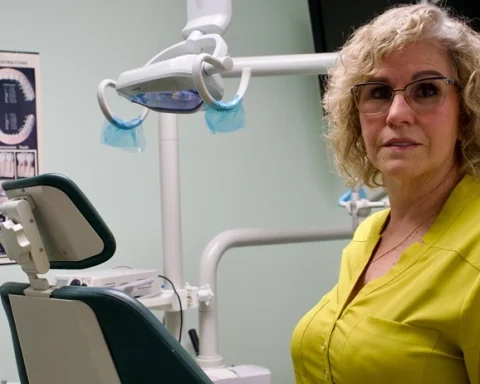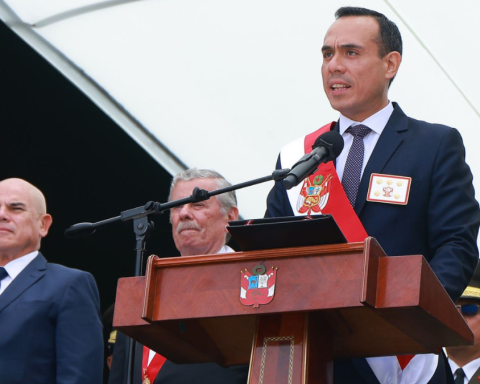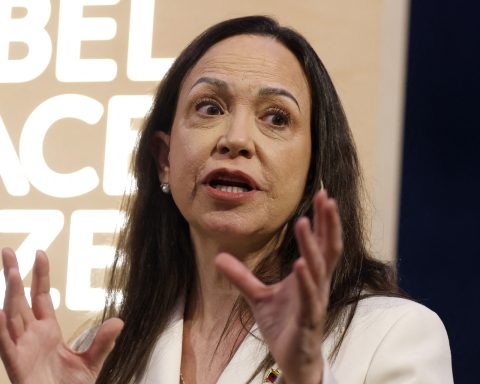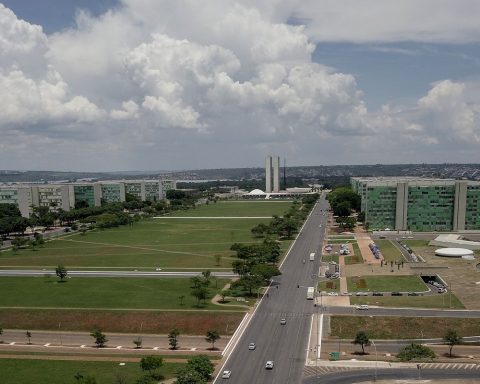Relatives of the co-founder of the Mothers of the Plaza de Mayo Azucena Villaflor de De Vincenti highlighted the “advanced vision” that she had for the organization “to begin to be around”and affirmed that the identification of their remains in 2005 allowed “closing a cycle of pain”, on the eve of the 45th anniversary of the disappearance of the group of 12 from the Santa Cruz church.
The kidnapping of Azucena, carried out on December 10, 1977, completed the operation that ESMA task group 3.3.2 had started two days earlier with the forced arrest of seven people who met in the church of the Holy Cross.
In total there were 12 family members, activists and militants disappeared as a result of these events, among whom were also the initial referents of the Mothers of the Plaza de Mayo Esther Careaga and María Bianco; and French nuns Alice Domon and Léonie Duquet.
“My mom was the famous housewife from before, who was in charge of organizing a large family group,” explained in dialogue with Télam Cecilia De Vincenti, fourth daughter of Azucena Villaflor and her husband Pedro De Vincenti.
As a result of this relationship, Pedro, Néstor and Adrián had been born previously, but it was with the disappearance of her second son, on November 30, 1977, that Azucena assumed a new role that led her to be one of the founders of Madres de Plaza. of May.
“When Néstor disappears, she goes out to look for him, she goes to the police stations, to the barracks. And there she realizes that each one going their own way makes no sense, that they all have to go together,” Cecilia said.
Villaflor’s daughter reflected that her mother’s experience as a telephone operator at the Siam company, where she participated in the mobilization of October 17, 1945 to Plaza de Mayo, and “her adoration of Evita” collaborated in “bringing out an Azucena that we did not we knew, which is what the organization has for the outside, not only for inside the house”.
“If my mom hadn’t said ‘Let’s go to Plaza de Mayo’, I don’t know if the Mothers would exist, because there are 14 women who give them a ball and from there they start hanging around”he emphasized.
One of Azucena’s nine granddaughters and current Secretary of Education for the municipality of Avellaneda, María Laura De Vincenti -daughter of Pedro, Azucena’s eldest son- highlighted in dialogue with this agency “the advanced vision” that her grandmother had, according to the stories from relatives, neighbors and friends who helped her rebuild her figure.

De Vincenti, born in 1983, recounted that her grandmother “every summer afternoon had the routine of having a beer. From then on I think of her as a housewife but with some peculiarities.”
Azucena had not been to the Santa Cruz church on December 8 because he was preparing a request with the names of the detainees-disappeared by the dictatorship.
The genocidal people had the information provided by the repressor Alfredo Astiz, who infiltrated that group posing as Gustavo Niño, the name with which he even signed that document.
On Friday, December 9, Cecilia -who was 16 years old at the time- remembered that her mother “had weird eyes”, and after insisting several times, she managed to get her to say: “‘What happens is that they took a group of people from the Santa Cruz church and I don’t know how to tell your dad'”.
As Cecilia indicated, her father “many times had insisted that she not be so ‘in the head of things'”, which generated arguments in the marriage.
Azucena did not get to talk to her husband because that December 10 she was intercepted in the vicinity of her house on Cramer street -now known as Azucena Villaflor-, in the Sarandí neighborhood in Avellaneda, when she was going out to buy a copy of the newspaper La Nation that had published the requested.
“There are things that we never talk about later,” Cecilia said and related the deaths of her father and her three brothers with the fact that “they could not fully assume the story.”
His childhood, María Laura recalled that “in our daily routine it was difficult for us to talk,” and pointed out that she took advantage of the moments when her father Pedro was contacted by journalists.
“I was a witness to those questions that they asked him and, once that interview was over, if I had anything left, I would ask him there,” he added.
The 12 kidnapped were transferred to the clandestine detention center that operated in the exESMA, where they were tortured to be thrown into the sea.
In 1977, five bodies appeared in the waters of the Atlantic coast that were later buried as NN in the General Lavalle cemetery, until in 2005 those remains were identified and recovered by the Argentine Forensic Anthropology Team.
Through genetic analysis, it was found that they belonged to the Mothers of the Plaza de Mayo Azucena Villaflor, Esther Careaga and María Bianco; and the French nuns Alice Domon and Léonie Duquet.
María Laura considered that the identification of her grandmother’s body marked “a reconciliation with history” for her family, which was able to “close a cycle of uncertainty and pain.”
“Knowing exactly what happened, having the remains… it’s like she stopped being a military NN to be my mom again,” Cecilia analyzed.
However, the remains of Néstor De Vincenti and his girlfriend, Raquel Mangin, are still missing and the family does not know in which clandestine center they were.
Meanwhile, María Laura confided that during the tribute to Hebe de Bonafini on Thursday, November 25, she felt “the joy of listening to the Mothers, but also the inevitable anger that my grandmother could have also died last week.”

Hebe’s ashes were placed in the Pirámide de Mayo and rest together with those of Villaflor, who had been there since 2005 by decision of their relatives.
For his part, C.Ecilia considered that the place of the Mothers and Grandmothers “will remain vacant”, since, she considered, “there is no one to replace them”.
“We are grateful to the rest of the Mothers for having gone to the Plaza the Thursday after my mother disappeared and for continuing with the fight,” Cecilia emphasized.
